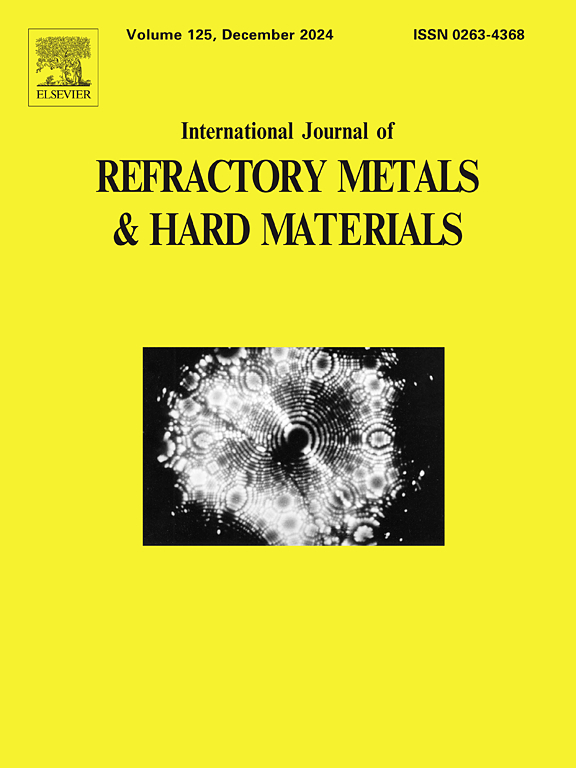Hardmetals with Ru-containing multi-element binders: Composition, constitution and phase formation
IF 4.2
2区 材料科学
Q2 MATERIALS SCIENCE, MULTIDISCIPLINARY
International Journal of Refractory Metals & Hard Materials
Pub Date : 2025-02-18
DOI:10.1016/j.ijrmhm.2025.107102
引用次数: 0
Abstract
In spite of the rather high cost of Ru, CoRu binders are commonly used by the industry for the production of cemented carbides with performance demands at high temperatures. In a recent study it was shown that the solubility of W in Co-binders is considerably increased by the addition of Ru (both at low and at high carbon contents), which can significantly affect aspects such as grain growth inhibition, hardness, corrosion resistance and high temperature strength. The present work has extended the study to further binder chemistries: Co, Ni, CoNi and CoNiCr, which have been evaluated both with and without Ru additions. The results indicate that Ru additions increase the solubility of elements like W and Cr for all binder chemistries, both at low and at high carbon contents. The solubility of W is the lowest in the Cr-containing systems (CoNiCr and CoNiCrRu), however, due to the presence of Cr, the total amount of elements in solution is the highest from all binders. The results clearly demonstrate that the WC growth behaviour is significantly affected by the chemistry of the binder system, i.e. the chemical environment of the growing WC grains, which is strongly linked with the chemical activity of carbon in the system.
求助全文
约1分钟内获得全文
求助全文
来源期刊
CiteScore
7.00
自引率
13.90%
发文量
236
审稿时长
35 days
期刊介绍:
The International Journal of Refractory Metals and Hard Materials (IJRMHM) publishes original research articles concerned with all aspects of refractory metals and hard materials. Refractory metals are defined as metals with melting points higher than 1800 °C. These are tungsten, molybdenum, chromium, tantalum, niobium, hafnium, and rhenium, as well as many compounds and alloys based thereupon. Hard materials that are included in the scope of this journal are defined as materials with hardness values higher than 1000 kg/mm2, primarily intended for applications as manufacturing tools or wear resistant components in mechanical systems. Thus they encompass carbides, nitrides and borides of metals, and related compounds. A special focus of this journal is put on the family of hardmetals, which is also known as cemented tungsten carbide, and cermets which are based on titanium carbide and carbonitrides with or without a metal binder. Ceramics and superhard materials including diamond and cubic boron nitride may also be accepted provided the subject material is presented as hard materials as defined above.

 求助内容:
求助内容: 应助结果提醒方式:
应助结果提醒方式:


